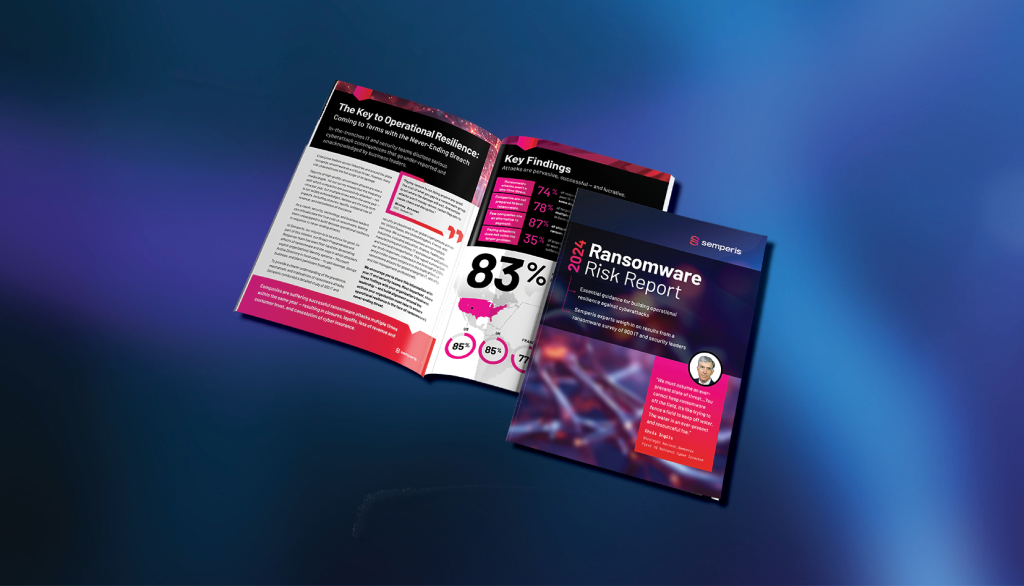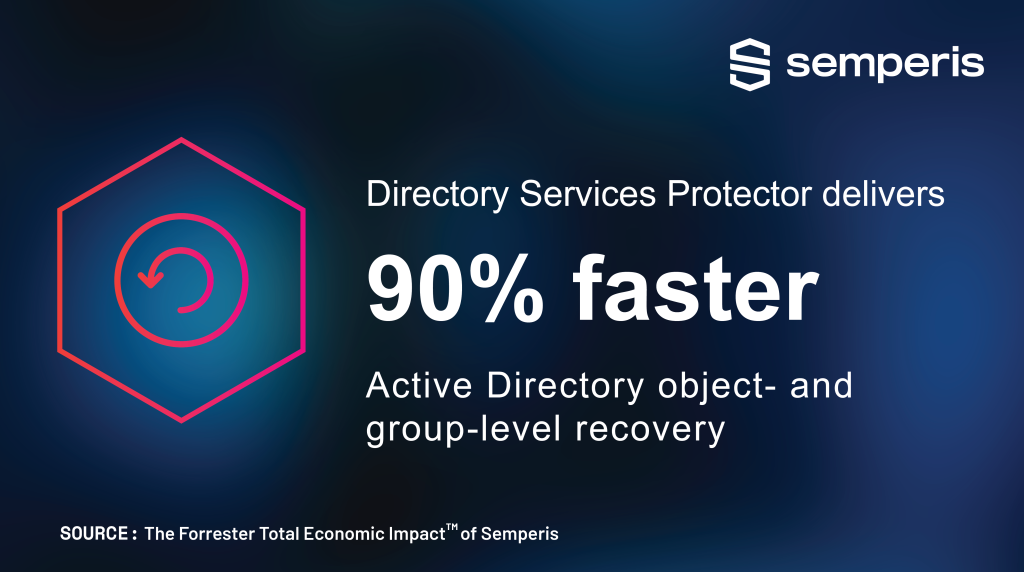Sicurezza di Active Directory
Categorie
- Backup e ripristino di Active Directory (63)
- Sicurezza di Active Directory (215)
- Sicurezza AD 101 (17)
- Strumenti della comunità (19)
- Modernizzazione degli elenchi ( 9)
- Dal fronte ( 69)
- Protezione dell'identità ibrida (68)
- Catalogo degli attacchi all'identità ( 29)
- Rilevamento e risposta alle minacce all'identità ( 144)
- La nostra mission: essere una forza per il bene (14)
- Purple Knight (5)
- Università Semperis (2)
- Il punto di vista del CISO ( 16)
- Ricerca sulle minacce (68)

Le nuove statistiche sui ransomware rivelano una maggiore necessità di sicurezza e resilienza di Active Directory
- Mickey Bresman
Ormai conosciamo tutti la necessità di una mentalità "assume breach" quando si tratta di ransomware e altre minacce informatiche. Per comprendere meglio la necessità e le sfide di questo approccio, abbiamo collaborato con la società internazionale di ricerche di mercato Censuswide per chiedere alle organizzazioni la loro esperienza con gli attacchi ransomware. Cosa...

Attenzione agli attacchi all'identità: AD Security News, luglio 2024
- Il team di ricerca Semperis
Con il continuo aumento dei cyberattacchi che prendono di mira Active Directory, i team che si occupano di sicurezza AD, identità e IT si trovano ad affrontare una crescente pressione per monitorare l'evoluzione del panorama delle minacce incentrate su AD. Per aiutare i professionisti IT a comprendere e prevenire gli attacchi che coinvolgono l'AD, il team di ricerca di Semperis pubblica una rassegna mensile dei recenti cyberattacchi e fornisce ulteriori...

Come difendersi dalla scansione SPN in Active Directory
- Daniel Petri - Responsabile formazione senior
La scansione del Service Principal Name (SPN) è una tecnica di ricognizione che gli aggressori utilizzano negli ambienti Active Directory. Questo metodo consente agli aggressori di scoprire servizi di valore e account associati, che possono essere potenziali bersagli per ulteriori attacchi come Kerberoasting. Lettura correlata: Proteggere Active Directory da Kerberoasting Cos'è la scansione SPN? Capire...

Forrester: Gli utenti di Semperis Directory Services Protector segnalano un'accelerazione del 90% nella bonifica a livello di oggetti e gruppi.
- Sean Deuby | Tecnologo principale
Uno degli incubi che gli amministratori di Active Directory temono è un semplice errore umano nella configurazione che può causare problemi di accesso o di sicurezza paralizzanti in tutta l'organizzazione. Ho sempre detto che uno dei commenti più inquietanti che si possono sentire al lavoro è quello di un amministratore AD che dice "Oops"! Come...

Attenzione agli attacchi all'identità: AD Security News, giugno 2024
- Il team di ricerca Semperis
Con il continuo aumento dei cyberattacchi che prendono di mira Active Directory, i team che si occupano di sicurezza AD, identità e IT si trovano ad affrontare una crescente pressione per monitorare l'evoluzione del panorama delle minacce incentrate su AD. Per aiutare i professionisti IT a comprendere e prevenire gli attacchi che coinvolgono l'AD, il team di ricerca di Semperis pubblica una rassegna mensile dei recenti cyberattacchi e fornisce ulteriori...

Gestione delle ACL di Active Directory: L'importanza della delega a livelli
- Daniel Petri - Responsabile formazione senior
Active Directory (AD) svolge un ruolo fondamentale come fornitore primario di identità per numerose organizzazioni in tutto il mondo, costituendo la spina dorsale dei sistemi di controllo degli accessi e di autenticazione. Questo rende però l'ambiente Active Directory un obiettivo primario per i cyberattacchi. Un attore minaccioso che ottiene il controllo di Active Directory può...

I clienti di Semperis riducono del 25% la probabilità di successo di un attacco AD
- Sean Deuby | Tecnologo principale
Noi di Semperis consigliamo sempre ai nostri clienti di prepararsi al peggio e di partire dal presupposto che i loro sistemi di identità saranno violati prima o poi: Un solido piano di recupero AD cyber-resistente è fondamentale. Ma lo scenario ideale, ovviamente, è quello di prevenire un attacco al sistema di identità (che è Active...

Semplificare la gestione dei permessi di Active Directory con Delegation Manager
- Darren Mar-Elia | Vicepresidente dei prodotti
Una delle attività di amministrazione di Active Directory più noiose ma importanti è l'assegnazione delle autorizzazioni alle varie persone dell'organizzazione, in modo che possano accedere agli oggetti e alle proprietà di cui hanno bisogno per svolgere il loro lavoro. Il problema è che AD ha un modello di sicurezza granulare che può essere complicato da gestire, e non...



